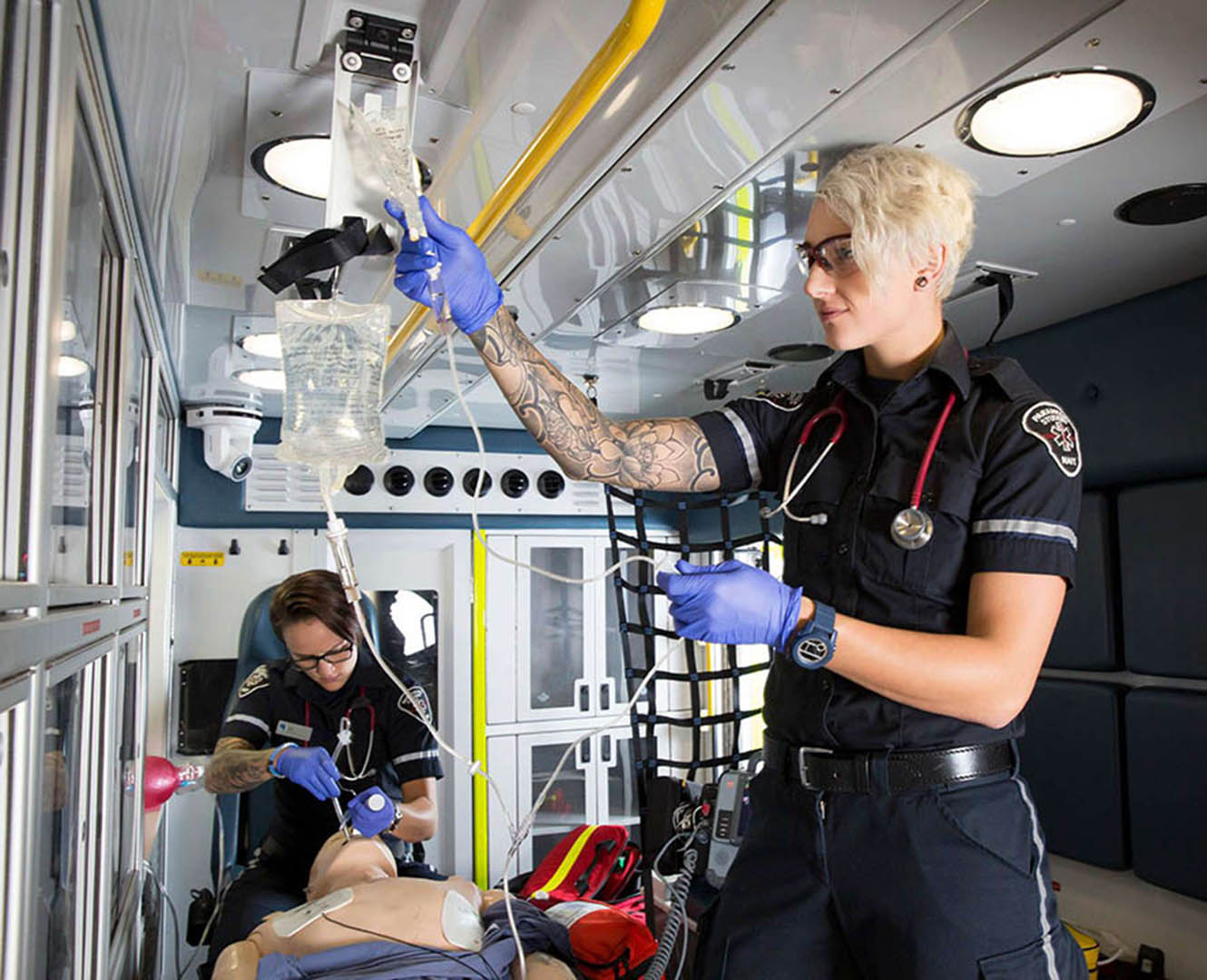By Celia Nicholls
NAIT is the first institution in Alberta to acquire a complete high-tech ambulance for the Advanced Care Paramedic program.
The simulator was custom built for the school of Health and Life Sciences at NAIT by Canadian company, SimLeader. The company also creates other high-tech simulations, including flight and combat training.
The chair of the Advanced Care Paramedic program, Michael Christian, said it places students in the most realistic ambulance environment they’ll experience outside of their practicum placements.
“It is a really awesome piece of equipment,” said Christian. “This is exactly what an ambulance here in Alberta would look like. It’s the same kind of configuration of the seats, dimensions are exactly the same, same equipment, everything.”
The new technology changed the course delivery and has distinguished NAIT’s equipment across Canada. The simulator unit, with the exception of a prominently placed NAIT decal, looks exactly like a genuine full-scale ambulance parked in the EMS lab on the ground floor of the CAT Building.
“[The program has] changed in terms of the excitement level and the realism,” said Christian. “The realism is what we can now capture. It’s really ramped up the excitement level because it feels like you’re really transporting somebody.”
Yet this convincing exterior conceals a complex and immersive multimedia infrastructure, including a motion platform that replicates the sensation of road travel. It has windows with screens that project video of passing scenery and the flashing lights with siren sounds that everyone associates with emergency response vehicles. It can reproduce the experience of travelling from NAIT to the University of Alberta Hospital, down to a familiar series of bumps and jolts from the long run of potholes on 109th street.
“Some people feel very claustrophobic in here, some people are sensitive to smells and motion,” said Christian.
A major benefit of the simulator is that it gives students the opportunity to experience what their day-to-day would look like and get the chance to see if this profession would be suitable for them.
In the end though, the simulator is only part of the equation. Christian said you don’t need an ambulance simulator to be a good paramedic.
“You can learn those skills in other ways and there’s different applications to them, because of course not everything we do is in the ambulance,” said Christian. “That’s our mode of transport, it’s our work environment, but to be honest, we do most of our work in people’s homes. We do most of our work on the street corner.”
Christian highlights how the most essential part of the program are the people involved and the personality traits required to excel.
“They have to be compassionate people,” said Christian. “They have to want to be there for people, to help people. So we’re looking for really compassionate and caring kind of people naturally.”
The staff is made up of paramedics and working professionals in the advanced care industry. With long learning hours, clinical work time and a unique simulator, Christian credits this program to NAIT’s commitment to student success.





